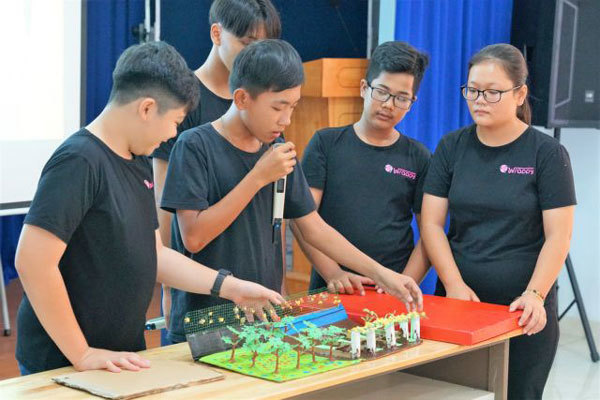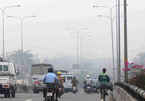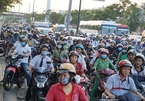 |
| Children speak at Clean Air Day organised by Saigon Innovation Hub, UNICEF Vietnam and international NGO Clean Air Asia last year. — Photo courtesy of the UNICEF |
Speaking at a forum on improving public awareness of air quality early this week at the American Center in HCM City, Dinh Thi Thien An, the school’s principal, said: “Many students gather at the air quality monitor during class breaks every day to watch the air quality index. Students who have smart phones watch the index on the application.”
After seeing the pollution levels through the index, they have seen the importance of wearing masks on the way to school and also begun to have action to reduce pollution, she said.
Besides, now it is easier for teachers to teach them about this issue, she said.
Trinh Ngoc Huong, a student at the school, said that she and her friends made a video on air pollution using the monitor’s indexes.
The air quality monitor is one of 13 the US consulate general and UNICEF helped instal at schools, kindergartens and universities across the city.
The project seeks to increase awareness of pollution among youths and their teachers and parents.
US consul Marie Damour said air quality has become a public issue after the Ministry of Health started regularly putting out information about air quality last year.
“As Vietnam and HCM City continue to grow you will face the challenges many growing metropolitan areas face – how to effectively address the byproduct of economic growth and modernization, in essence, ensuring the air remains healthy enough to breathe, allowing the city’s citizens to thrive.
“This is not an easy issue to resolve, it remains critically important as Vietnam continues to grow.”
The forum explored ways to help ensure that HCM City has both a sustainable economy and clean air for people to breathe.
Local air pollutants, which are ranked among the top causes of premature death by the World Health Organization, have been at alarming rates in HCM City, according to environmental scientists.
Nguyen Huu Nhan of RMIT University said: “Air pollution is a slow death because it causes short-term effects such as pneumonia or bronchitis, irritation to the nose, throat, eyes, headaches, dizziness and nausea, and long-term ones such as heart disease, lung cancer and birth defects.”
Marianne Oehlers, chief of the programme partnerships office, UNICEF Vietnam, said that one of 10 children aged under five dies due to air pollution.
“We know much more about how air pollution impacts children and also people’s lives.”
In an effort to promote child participation in tackling child-related urban issues under the framework of the UNICEF – HCM City Child-Friendly City Initiative Cooperation Programme, the Saigon Innovation Hub began piloting the Social Innovation Clubs project and Clean Air project in 2018.
These efforts aim to enable children and adolescents to play an active role in improving air quality and make HCM City a cleaner and more child-friendly and resilient city. — VNS

HCM City needs new policy to reduce air pollution
Experts think that HCM City authorities need to apply a special policy under Resolution 54 to amend existing policies to better manage quality of the air.

Central HCM City exceeds PM2.5 emissions limits
Transportation activities make up 99 percent of the total CO emissions of HCM City.
 Students of Thanh Da Secondary School in HCM City’s Binh Thanh District have greater awareness of air pollution and measures to prevent it after an air quality index monitor was installed in the school a few months ago.
Students of Thanh Da Secondary School in HCM City’s Binh Thanh District have greater awareness of air pollution and measures to prevent it after an air quality index monitor was installed in the school a few months ago.